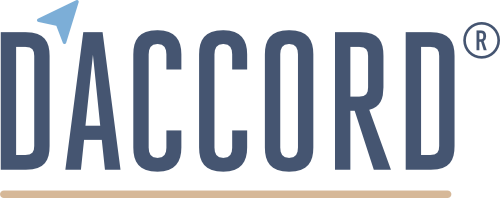How DACCORD® works:
A phased approach …
Phase 1: Preparation & Setup
The goal of this initial phase is to establish a solid foundation, a shared understanding, and crucially, commitment to the process rules from all participants. By clearly defining the roadmap and rules of engagement upfront, this phase ensures everyone is aligned and implicitly agrees to the structured approach before diving into the content. Key activities include:
- Defining the scope, objectives, and timeline.
- Establishing clear communication channels and roles.
- Preparing the initial draft document (e.g., contract template) or defining the key topics for initial input.
- Issuing the first Process Letter outlining the roadmap and rules.
Phase 2: Structured Input & Feedback
This phase focuses on systematically gathering comprehensive and comparable input from all parties. Depending on the starting point, this might involve collecting initial positions on key topics to shape a first draft, or providing feedback on an existing draft document. It replaces unstructured comment rounds with an organized approach to ensure all perspectives are captured efficiently. Key activities include:
- Distribution of the draft document or input templates to all parties.
- Systematic collection of input/feedback within a defined timeframe, using specific templates to ensure clarity and comparability.
- Clear instructions on how to provide actionable input or comments.
At the end of this phase, all initial input or feedback is collected in a structured manner, ready for analysis and consolidation.
Phase 3: Consolidation & Analysis
The primary objective here is to efficiently process the collected input/feedback and transform it into a clear, manageable basis for the actual negotiation (or the next drafting iteration). This avoids getting lost in raw comments and focuses attention on the critical points. Key activities include:
- Efficient processing and consolidation of all received input/feedback.
- Categorization and prioritization of comments/inputs (e.g., identifying points of consensus, crucial negotiation topics, points not considered with explanation).
- Preparation of revised document versions (or the first consolidated draft) and structured summaries of feedback, highlighting points of agreement and areas requiring further discussion.
- Circulating the consolidated feedback summaries and the proposed negotiation agenda (e.g., the list of open points) to all parties for final confirmation. This crucial step ensures agreement on what will be
negotiated, preventing the introduction of new topics later and solidifying the negotiation scope.
At the end of this phase, an agreed-upon intermediate status is reached: there is a clear overview of agreed points, potentially a revised draft, and a final, confirmed list of issues requiring negotiation.
Phase 4: Focused Online Negotiation
This central phase aims to collaboratively resolve all pre-identified open issues and reach binding decisions in a single, efficient session. It leverages the structured preparation and the confirmed negotiation agenda to make the negotiation itself targeted and productive. Key activities include:
- A single, well-prepared online meeting focusing only on the pre-identified and confirmed open points.
- Utilization of proven techniques and tools for effective online negotiation and collaborative document editing (e.g., shared screen work, structured moderation).
- Aiming for binding resolutions on all open issues during the session.
At the end of this phase, a pre-final, agreed-upon version of the document is achieved online, establishing a definitive status that is immediately shared with all parties.
Phase 5: Finalization & Documentation
The final phase focuses purely on ensuring the technical accuracy and polish of the agreed-upon text, without reopening content discussions. It guarantees the document reflects all decisions clearly and is ready for formal execution. Key activities include:
- A final review loop strictly limited to editorial checks (typos, formatting, consistency) based on the version agreed in Phase 4.
- Clear documentation of the overall negotiation process and its outcomes.
- Preparation of the final, clean document for signing.
At the end of this phase, a finalized, editorially sound, ready-to-sign agreement is available.
Throughout this process, DACCORD® is supported by proven templates (like Process Letters, feedback forms), practical tools, and expert guidance/how-tos (e.g., on leading online negotiations effectively, managing shared documents). These elements empower facilitators and participants to navigate the process efficiently.






